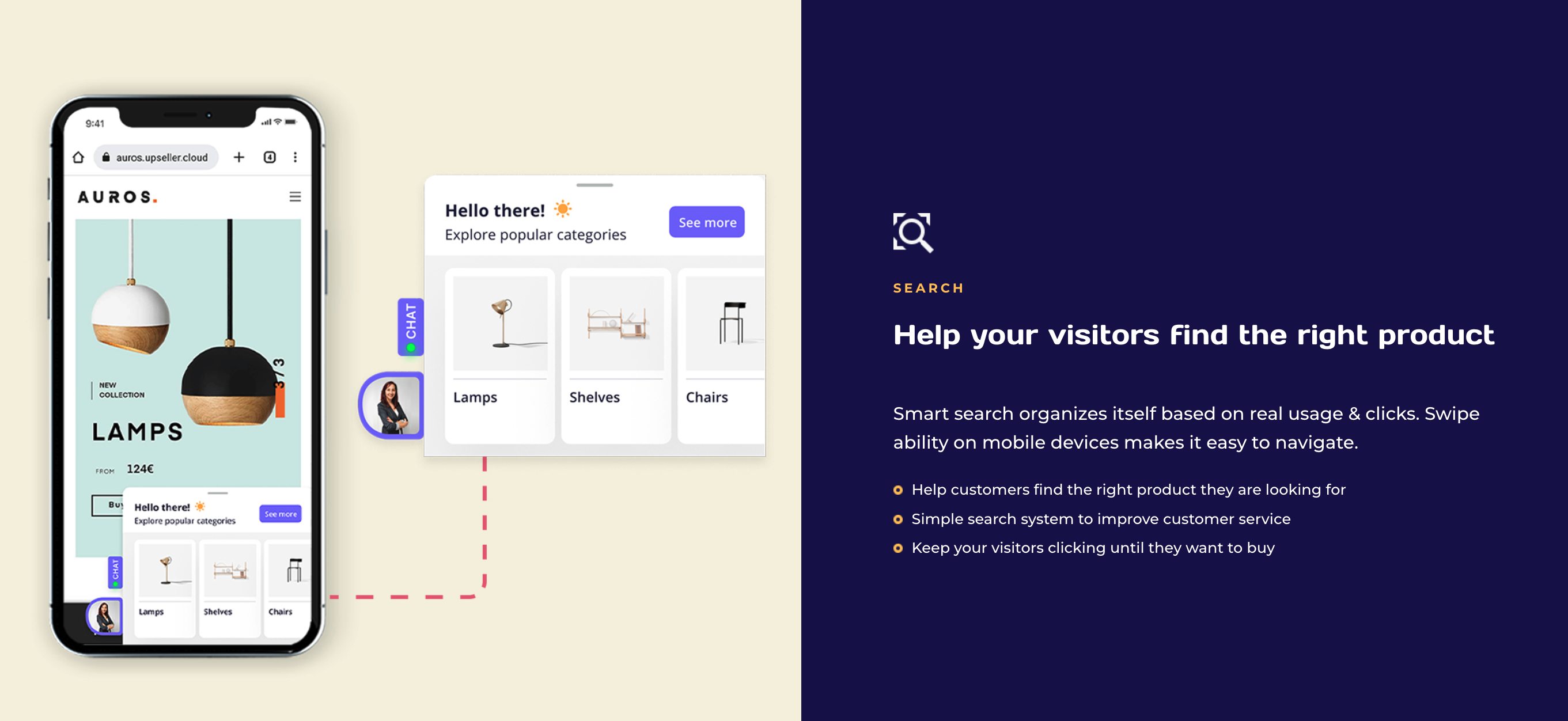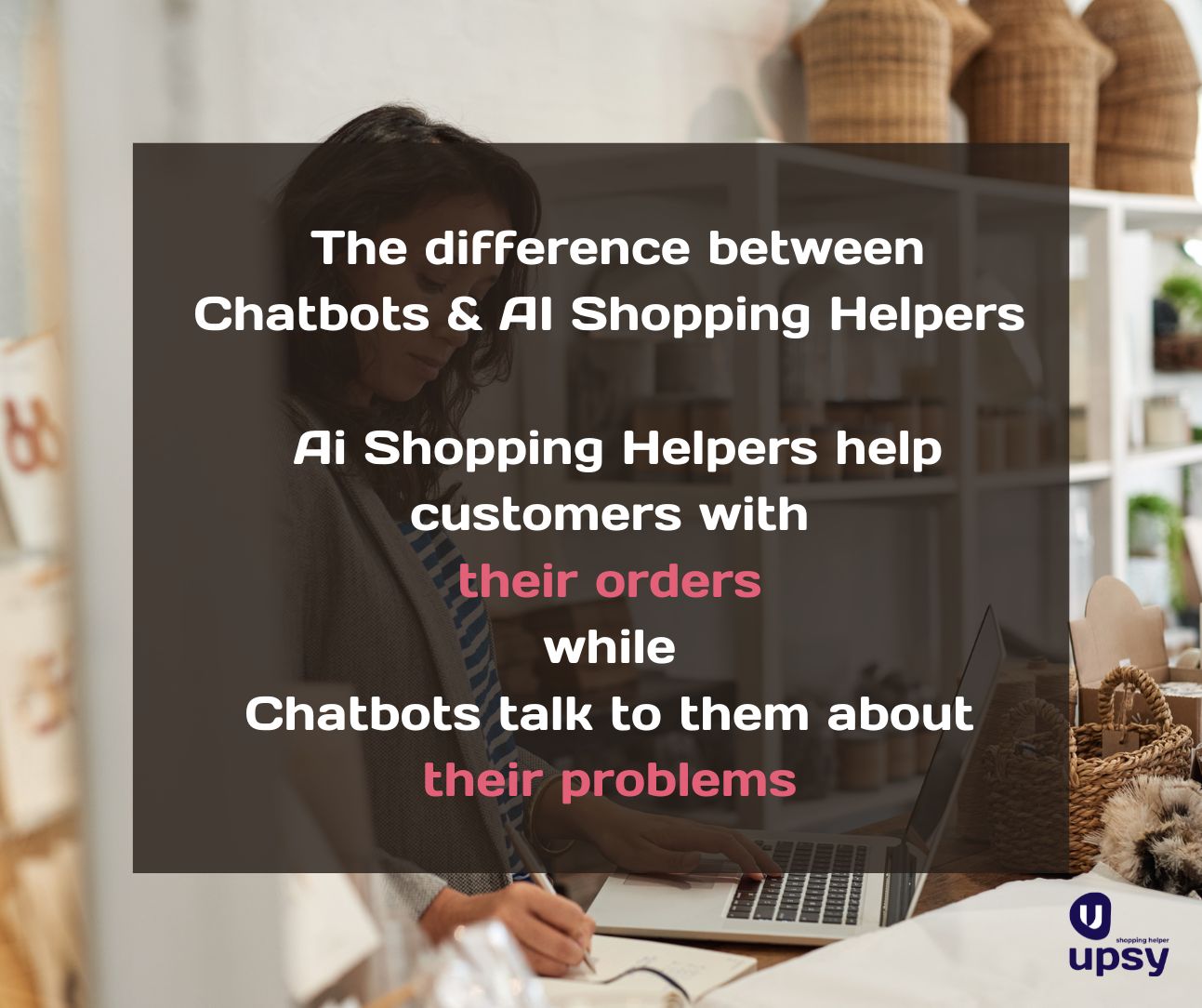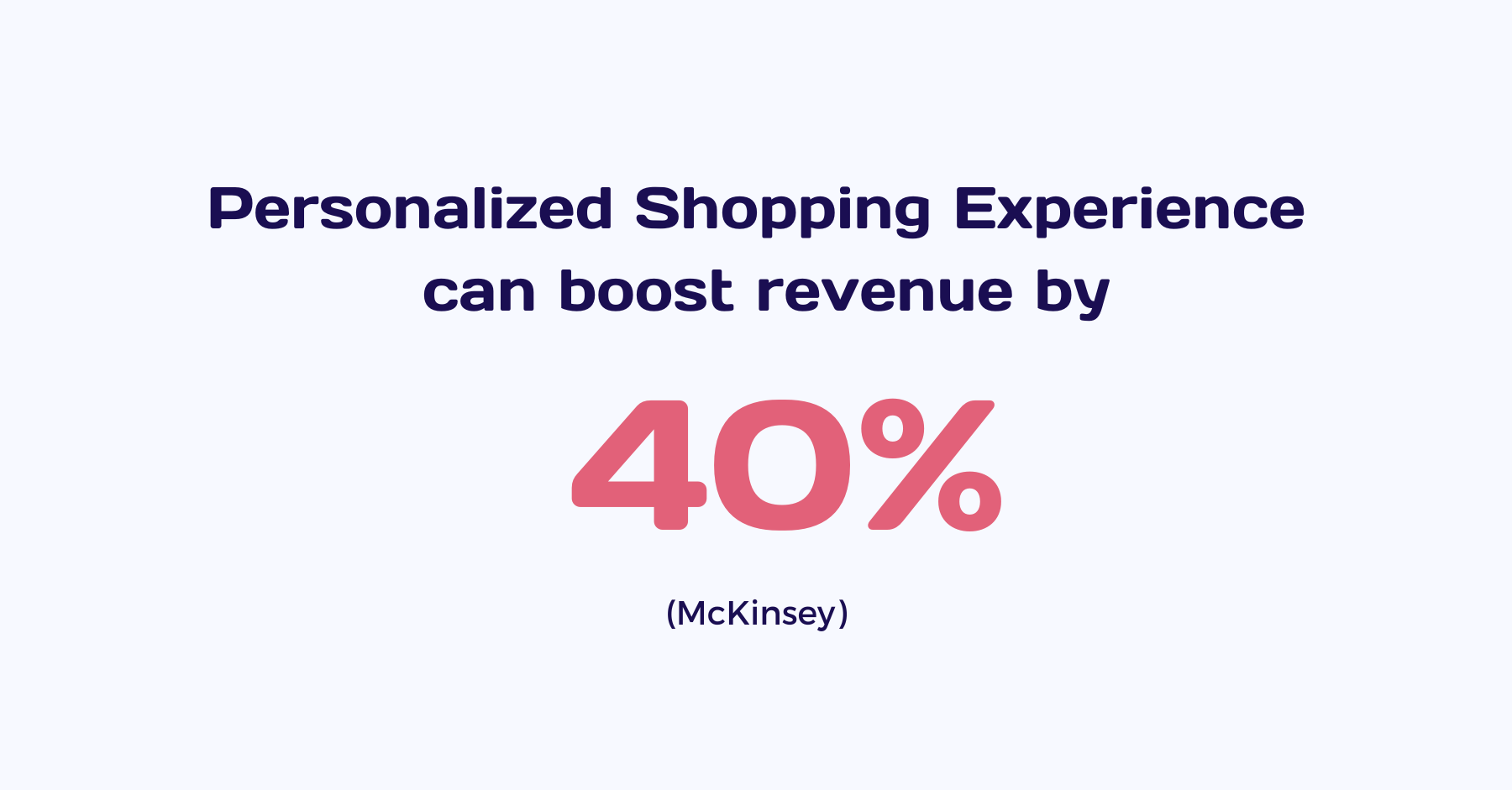Virtual Shopping Assistants Versus Chatbots: What Your Store Needs to Get More Sales in 2023
Your eCommerce strategy should primarily revolve around one thing – great user experience. While offering many advantages in comparison, websites have typically never been able to provide the direct personal service of physical stores. So, what type of features should you consider when you want to improve your e-commerce sales in 2023? Your mind probably immediately went to chats and chatbots when thinking about immediate assistance on an eCommerce site, which is entirely reasonable. Such tech has become far more prevalent over the past decade. However, you’ll find that standard, traditional chatbots of human-operated chats don’t hold a candle to virtual shopping assistants.
Section 1: Let’s First Talk About Chatbots
It’s impossible to talk about virtual shopping assistants without talking about chatbots. Now, before virtual shopping assistants entered the market and kicked things up a notch, chatbots and human-operated chats filled the crucial human interaction void to make the shopping journey easier. While you might think it’d make more sense to humans doing the talking on your website, it’s not all that efficient or financially savvy.
Having humans running your eCommerce chat support means you’d need to hire multiple people to handle website inquiries to deal with the workload. Whether you’re a small, medium, or large business owner or executive, taking on additional salaries doesn’t make much sense when there are other, more profitable options. Additionally, for smaller companies, hiring anywhere between 1 and 4 people to deal with such tasks plainly isn’t an option.
Thus, in theory, chatbots–especially before the dawn of virtual shopping assistants–presented the happiest possible medium. Your eCommerce website would benefit from customer service to simplify the online shopping process for visitors without the related financial burden of human reps.
What Can a Chatbot Do For Your eCommerce Website?
Here’s a list of what a standard chatbot commonly adds to an eCommerce website:
- Getting leads, but you don’t want them, you want sales
- Provides instant solutions, reschedules requests, and completes refunds through automation
- Answers basic questions
Chatbots Make a Difference with Your Business and Your Customers
Yes–chatbots help serve customers and work beautifully on B2B sites, but they also go far in making life simpler for your sales and marketing departments. They improve customer engagement by providing immediate, reliable responses in a matter of milliseconds. Moreover, chatbots can hold a customer’s hand from the beginning of the lead generation until the end, providing a quick solution to get FAQ answers or your request in. There are limits to the hand-holding a standard chatbot can do–but we’ll delve into that in a different subsection.
Will Chatbots Knock Down All UX Obstacles?
We’ll start this subsection with an analogy. Say your only options for commuting to work are walking or riding a bicycle. You’d obviously take the bike, and it’d be much better and more efficient than walking. With that said, it’s still only just a bike, and it only goes so fast. It makes sense as a transportation method if you’re relatively close to the office, but that’s all. Provided your workplace is a few towns over, taking a bike becomes increasingly less efficient. Chatbots present a similar problem. Yes–you’re gaining a substantial advantage compared to having no type of direct assistance on your website. But it has its limitations.
Back to the bicycle analogy, a chatbot can be like riding a bicycle to work when you’ve got to travel down a busy highway. Yeah, it’s better than walking down the freeway. But it doesn’t really compare to driving in a car (i.e., having a virtual shopping assistant on your eCommerce site).
Are Standard Chatbots All That They Could Be?
Chatbots do make a difference. They excel when it comes to managing rudimentary service encounters. However, chatbots need to be taught. Provided you have hundreds or even a thousand items of inventory (or more), it’ll require tons of time to teach the chatbot the potential customer questions and various product details. Then, upon reaching the chatbot, they still get overwhelmed with questions like, “Will this item break if I smash it against the wall?” They simply aren’t up to the task when the inquiries get a bit more complicated. Undoubtedly, chatbots have the intelligence to pick up on the context of a conversation. Plus, they excel when figuring out the correct bot flow. But they are incapable of locating answers on their own. Nor can they independently perform activities.
Why Else Are Traditional Chatbots So Limited on Webshops?
There’s no existing database where most chatbots can retrieve information–bots instead create their own database. This scenario is the same as if you stopped into an electronics store and asked the sales rep about a video game, and they had no answers. And there was no available product information. This includes not having access to what was stocked on the store’s shelves or looking at descriptions. The rep would have to learn all this information from somewhere else.
The Catch-22 with Chatbots
For all the limitations we’ve discussed, your eCommerce website simply can’t thrive without some kind of available virtual online assistance. Really, the key is, taking all the strengths you gain from a chatbot and remove all the weaknesses. That’s a pretty broad statement, sure. If you could remove anyone’s faults and replace them with positive attributes, we’d all be billionaires. It’s like taking a champion marathon runner and teaching them to sprint the 100-meter in record time. You’re asking for too much–or so it seems. But there’s another side of the coin you need to consider. Sticking with the above analogy, If a chatbot is a marathon runner, a virtual assistant is a 100-meter sprinter, which brings us into our next section:
Section 2: Examining Virtual Assistants
What is a Virtual Assistant?
Also known as an intelligent personal assistant, a virtual assistant helps people manage their email, schedule meetings, and perform other everyday tasks and activities. Examples on the market include:
- Microsoft’s Cortana
- Amazon Alexa
- Google Assistant
- Apple’s Siri
These are the voices of the present and future–and have become an everyday part of society, seemingly ubiquitous, existing in all facets of life.
Note that we aren’t yet discussing virtual shopping assistants. Don’t worry, though–we’re getting there.
What Advantages Do a Virtual Assistant Present?
Unlike a chatbot, a virtual assistant can learn beyond your own personal knowledge base. On its own, a chatbot plainly can’t access your product database, whereas virtual assistant tech can scour the ends of the earth to find you what its users seek. But up until relatively recently, there was an issue with this type of tech, which we’ll explore in the next section.
What Are the Limitations of a Virtual Assistant?
Typically, virtual assistants have been limited in what they can offer retail customer service. Their ability to gather necessary data in seconds has been limited to answering questions and commands from smartphones, laptops, or smart speakers/interactive devices.
The seamless access to data offered by virtual assistants hasn’t been leveraged to its fullest (until recently) on retail eCommerce websites. Their role has been specific to everyday tasks, only capable of making suggestions to reach out to a given company.
Also, virtual assistants couldn’t resolve any issues or queries in the past, which is at the heart of customer service.
Note that we are speaking in the past tense when we’re pointing out the limitations of virtual assistants in online customer service. Recent advancements have taken some of the key features of virtual assistants (e.g., seamless access to product data) and applied them in an eCommerce setting.
Section 3: The Dawn of the Virtual Shopping Assistant
What happens when you take the customer-service-based approach of a chatbot and combine it with the vast knowledge base of a virtual assistant?
You have yourself a virtual shopping assistant.
This way, your chatbot goes from being easily flummoxed and hampered by anything more than a baseline question to becoming an eCommerce info desk. You don’t need to teach a virtual shopping assistant everything as it easily gathers information from your database. Unlike a standard chatbot, a virtual shopping assistant lets online shoppers know something highly specific (e.g., the clay flowerpot is less durable than the plastic one).
Better yet, a virtual shopping assistant goes above and beyond answering detailed questions, offering:
- Finding the right product
- Additional and alternative product options
- What you should buy with this product
- Personalized discounts
- And much more.

How can virtual shopping assistants make the customized recommendations listed above? First off, they use recommendation algorithms to conjure personalized suggestions based on what other shoppers have browsed and bought. It also follows what visitors do on your webshop. So they understand what product you are looking for and answer those specific questions and gives recommendations.
These capabilities cover almost all ends of the customer service/user experience spectrum. It’s like going from only having written product information in your physical store to having a high-level salesperson.
Now, we’ve only just scratched the surface with a virtual shopping assistant’s capabilities. Below, we’re about to delve into much more detail. Furthermore, be mindful that while virtual assistants have been associated with voice chat, these virtual shopping assistants are generally text-based. Although voice commerce is a growing trend.
Still, virtual shopping assistants have data-accessing capabilities combined with machine learning and natural language processing tech. Voice chat (or lack thereof) aside, you’re still harnessing many of the same tools.
The Numbers Speak for Themselves
Before getting into the finer details of all that virtual shopping assistants offer your eCommerce operation, let’s examine the difference they’ve already made. Advances in the AI capabilities of chatbots and evolving them into more of an “info desk” have allowed them to answer around 80% of questions.
Furthermore, about 34% of online shoppers prefer online shopping assistants over human reps. It’s fair to expect this trend to keep growing since Millenials and Gen Zs do not enjoy phone calls. In fact, 80% of survey respondents claimed that phone calls give them anxiety.
While the above information doesn’t necessarily directly lead us to the uprise of virtual shopping assistants, consider what we’ve already established. It doesn’t often make financial sense for most businesses to have human customer service reps sit around 24/7 answering chat inquiries on their eCommerce website. In fact, even if you’re heavily reliant on a human customer support team, you can bolster their efforts by implementing a virtual shopping assistant.
Other than a chat feature on your eCommerce site, the only way to contact a business outside of a phone call is through email or social media DM. Neither option offers the immediate answer of a virtual shopping assistant.
Millennials and Gen Zs are the consumers you need to worry about most, given they’re going to dominate the market as boomers age out. And those age groups don’t want to make phone calls but still seek out personalized services. Virtual shopping assistants are the only way to meet that need without breaking the bank on labor costs.
Section 4: The Benefits of Adding a Virtual Shopping Assistant to Your eCommerce Site
Below is a list of the direct benefits you’ll get from implementing a virtual shopping assistant onto your eCommerce website.
Virtual Shopping Assistants Gather and use Data for learning
The only way to know what your customers want is by learning about them. Nothing provides those deep-dive target consumer insights and susses their preferences like detailed data. By improving data, it’s possible to make more personalized recommendations, which convert 5.5 times higher than non-personalized suggestions.
Need any more convincing about the value of quality data? Netflix saves $1 billion per year in customer retention because of its data usage.
Virtual Shopping Assistants Help Save Money
It’s estimated that virtual shopping assistants and related technologies make money. For 1000 chat sales sessions a month you need 1 full-time operator. Imagine, if there are 10 000 chat conversations a month. We’ve already discussed why this is the case. Namely, virtual shopping assistants reduce the associated labor costs of hiring a chat support team.
And, even if you have an existing human team, they can focus on the more high-level issues when you incorporate a virtual shopping assistant. Instead of getting worn down by endless, menial inquiries, your people will strictly focus on customers who require their expert personal touch. Therefore, your employees will provide more value, generating more returns from their labor.
Virtual Shopping Assistants Will Keep You Ahead of the Curve
You don’t want to be behind the pack when it comes to customer service. Even better is having a leg up on your competitors. A virtual shopping assistant will either keep your eCommerce site in the game or send you skyrocketing ahead of rivals. It will make a huge difference in market spaces where such technology isn’t commonplace, allowing your business to stand out from the pack as a trendsetter.
Virtual Shopping Assistants Drive Customer Retention
Did you know that it costs nearly six times as much to find new customers as it does to retain current ones?
Virtual shopping assistants help you retain customers because of their 24/7 availability combined with their vast capabilities. You don’t need to worry about customers getting upset because your customer support is inaccessible. That level of convenience and accessibility offers a reason to stick around and stay loyal to your brand.
These advantages, of course, further solidify your exceptional products, services, and core company values.
Virtual Shopping Assistants Increase Sales Revenue
Virtual shopping assistants assure more sales conversions on your eCommerce website through product recommendations and sending abandoned cart notifications. Remember, one of the key proponents of sales is persistence. Sometimes, all that’s needed is a gentle reminder when someone leaves behind a full cart. Considering that nearly 70% of carts are abandoned, the abandonment reminder feature is a requirement of essentially all eCommerce sites.
All transactions count. And abandoned cart reminders maximize the value of every last person browsing your eCommerce site.
Section 5: The Functionality of a Virtual Shopping Assistant
In this section, we’ll take a deeper look into the core functionality of a virtual shopping assistant on your eCommerce website.
Answering More Specific Questions Than Ever
We’ve come so far from the days when chatbots could only answer a few questions. Fortunately, because of virtual shopping assistants, we’re long past the stage of infancy. Now, companies can rely on this tech to provide answers about:
- Shipping costs
- Delivery times
- Refund Policies
- Information about brick-and-mortar locations
- Product-specific questions about materials, sizing, warranty, etc.
The above list of possible answers runs the gamut of potential customer questions. This information is what customers typically want to know, and it often doesn’t get much more specific. Consider all that can get done without a single human employee lifting a finger.
Customers far and wide get the personal attention of an actual sales employee. At the same time, everyone else in your company focuses on more high-value tasks. For instance, your human customer support team can focus their energy on emergency escalations with customers who’ve had a bad experience. They can turn the situation around because they have the freedom to focus all their brainpower on that specific problem.
Compare that to your support team being pestered with questions about product sizes and warranties and simultaneously needing to handle an angry or upset customer. In the above vein, removing menial workloads sets your sales support teams up for success because they can better hone their processes when dealing with more challenging issues.
Dispersing Necessary Order Information
We’re currently living in the era of the broken supply chain. And it’s really run eCommerce ragged over the past couple of years.
This ongoing supply chain struggle means retail companies with eCommerce channels must be transparent with their customers. Consumers don’t want to think their purchases have disappeared into a great sea of nothing. Sure–delivery times may increase, but keeping customers informed about their orders’ status quells many potential anxieties. At least, by remaining in the loop, customers can take comfort in knowing their order will arrive and that if there are problems, they’ll be rectified. Because being transparent gives your customers reason to trust your brand. You could send out notifications about deliveries through email, but your virtual shopping assistant can further solidify these efforts.
Moreover, sending delivery notifications through a virtual shopping assistant keeps a website visitor’s attention that little bit longer, increasing the chance they’ll make another purchase. Your company can inform customers through a virtual shopping assistant when their package arrives. Plus, the virtual shopping assistant provides tracking information so a customer can follow their order.
Recommending the Right Products at Good Time
You can visit some brick-and-mortar locations as a customer and not receive a single recommendation from a sales staff. Conversely, everybody’s favorite retail store has an eagerly awaiting team that gets to know customers and makes personalized purchasing suggestions.
Virtual shopping assistants emulate the exceptional brick-and-mortar experience by making those personalized, specific recommendations. The technology available today learns about a website visitor’s needs, preferences, and behaviors to create hyperspecific suggestions.
These two immediate advantages come to mind with these recommendations:
- People who otherwise would’ve left your website are enticed by product recommendations they wouldn’t have known to look for.
- Website visitors already intent on purchasing can find products faster, improving their customer experience. It also increases the chances of upselling these customers and ensuring their repeat business.

Enticing Customers with Coupons, Specials, and Other Deals
Here are some stats worth mulling over:
- 142-plus million US adults redeemed digital coupons in 2020 alone.
- Nearly 70% of consumers are more loyal to brands that offer digital coupons.
- In 2020, 92% of shoppers searched for coupons or special offers before making online purchases.
- 60% of surveyed online shoppers believed discounts grew even more valuable throughout COVID-19.
Offering deals, coupons, and specials is about as tried and true a marketing practice as there is. It’s become even more successful during these trying times.
It’s one thing to have these deals available. It’s another thing to make it known to as many customers as possible. Your virtual shopping assistant gives you another marketing channel to advertise your coupons or other discounts available to online shoppers.
Here are some of the deals are typically offered by virtual shopping assistants:
- First-time customers receive welcome discounts
- Promoting seasonal offers
- Offering discounts specific to products
- Sending special offers to customers once they attempt to leave the website
Touching Base with Customers Who’ve Abandoned Their Shopping Carts
Earlier, we brought up the mass amounts of customers that leave their virtual shopping carts abandoned. If you could recoup just a small percentage of those individuals, you’d drive up sales revenue significantly.
Your virtual shopping assistant can remind online shoppers of what was in the cart they left behind when they revisit your website or social media pages. While success in this avenue depends on where you place your assistant, the capability is undoubtedly there, making this tool highly appealing.
While emails are an option, virtual assistant cart abandonment reminders have proven the more successful approach. On that note, this tactic has achieved up to a 33% conversion rate.
Section 6: Examples to Inspire
Below we’ll provide some proof of concept examples that show the dynamism and potential of virtual shopping assistants:
Levi’s Offering the Best Possible Fit to Online Customers
The virtual shopping assistant used by Levi’s can be found on Facebook Messenger and on the brand’s website. Its purpose is to help website users decide on their ideal pair of jeans. Levi’s personal shopping assistant asks customers about their preferences and uses the provided information to make recommendations.
Although there is no in-person help, Levi’s can still provide accurate sizing recommendations to its customers.
LEGO Offers the Gift of Giving
The purpose of LEGO’s virtual shopping assistant is all about customers buying gifts for their friends and loved ones. LEGO has an enormous catalog of items, and its virtual assistant streamlines the product exploration process by:
- Asking a series of questions to learn about the person receiving the gift
- Learning about all budgetary requirements
- Taking the above-learned information, making personalized product recommendations, and providing links to those products.
By utilizing their virtual shopping assistant, LEGO generated an ad-spend return of 600% in some markets. LEGO’s virtual shopping assistant also spearheaded 1/4 of all in-season sales online.
H&M is Providing Users with the Ideal Outfit
Upon asking a sequence of questions to learn more about an online shopper’s style, H&M’s virtual shopping assistant makes specific recommendations based on those preferences. H&M’s shopping assistant also lets website visitors create an outfit. Furthermore, shoppers can view and save outfits made by other users. Each outfit suggestion comes with an adhering product page that can be reached with one tap.
Sephora and Its Diverse Virtual Shopping Assistants
Using Sephora’s virtual shopping assistant, customers can identify the products that best suit their needs. After doing so, the customer is directed back to Sephora’s website to finish buying their preferred products.
Differentiating Sephora from the pack is their usage of multiple virtual assistants that perform the following functions:
- Help customers book reservations with Sephora’s beauty specialists
- Test out different makeup and color combinations via augmented reality tech
Section 7: Who’s the Virtual Shopping Assistant Provider for Your Company?
While the above section examined mainstream companies who’ve had success with virtual shopping assistants, such tech isn’t only available to heavyweights like LEGO and Levi’s. You can run a mom-and-pop shop that’s entered the eCommerce space and find an affordable, profitable solution that generates a significant return.
With Upsy Shopping Helper, 1€ invested to Upsy brings in an average of 27€ of sales. In comparison, Investing 1€ in Google marketing brings around 5€ in sales.
For instance, one of our clients at Upsy attributes 23% of all their sales to our virtual shopping assistant.
Additionally, Upsy users enjoy a 37.2% higher average purchase than non-users.
Another of our clients spoke to a 42% growth in shopping cart size and a 54% higher conversion rate due to Upsy. Our algorithm learns without any teaching while automatically completing 1100 customer service tasks per month.
2mins video to discover what is Upsy shopping assistant can bring to your store
Want to learn more about what our virtual shopping assistant can do for your business’s eCommerce channels? Read our case studies or feel free to get in touch right away–we’d be more than happy to answer any questions.
Conclusion: Virtual Shopping Assistants Are the Next Step in the Chatbot Evolution
As technology continues to advance, so do the standards of users. The rudimentary chatbot that can’t do anything more than answer pre-set questions is becoming extinct. And it’s being rapidly replaced by virtual shopping assistants that provide more thorough, personalized services that emulate the in-person shopping experience.
When customers visit your online stores, they expect the same level of personalized attention that they’d get in your brick-and-mortar location. It’s now–more than ever–of the essence to provide that top-notch user experience unless you want your potential customers going to your direct competition.
Moreover, one of the most appealing traits of virtual shopping assistants is that they’re low-risk and high-reward additions to any eCommerce site. As long as you take the time to familiarize yourself with successful virtual shopping assistant strategies and tactics, you’ll save tremendously on labor costs. And you’ll boost sales and customer loyalty by offering a high-level user experience.
It’s amazing to think how far this technology has come in such a short time. But we’ve entered the future many of us only thought would only exist in movies, and now’s the time to embrace it to the fullest extent.
.


